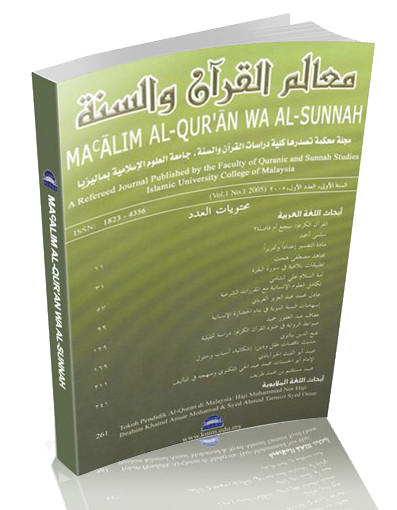Laman web al-Durar al-Saniyyah: Aplikasi dan Keberkesanan dalam Pengajaran dan Pembelajaran Kajian Hadis dalam Kalangan Pensyarah dan Pelajar Fakulti Pengajian Quran dan Sunah, USIM
DOI:
https://doi.org/10.33102/jmqs.v10i11.79الملخص
The method of learning and teaching hadith is evolving in line with the growth of modern information technology. Among the new methods of teaching and analyzing the hadith is by employing the web-based data analyzer. This study aims to identify the effectiveness of dorar.net in analyzing, classifying and grading a hadith. It seeks to explore the historical background of the website, evaluate the use of the page and its effectiveness as an educational mechanism in pedagogy, review the efficiency of its user-friendliness and examine the advantages and shortcomings of the website. The study is a mixed method of qualitative and quantitative. Qualitative data is collected through interviews while quantitative information analyzed through distributed questionnaire. Based on the collected data, the study proved that dorar.net has an effective role in helping students to classify a hadith in which at the same time increased the efficacy of learning progress.
Furthermore, its feature as a user-friendly device contributes to become an easy access website for learning the hadith. The study confirms that by using dorar.net, besides its easy-access, students consume less time and money to learn and analyse a hadith. The study also ascertains the disadvantages of using dorar.net; it is indeed, a difficult task to decide a morphological root word of an Arabic word before launching search on particular hadith. In certain cases, the page did not provide complete information about the details of publication on a specific hadith. In conclusion, the website is a helping hand for the researchers and students, an instrument that is recommended as an effective technique of learning hadith, and mechanism for grading and classifying the hadith for the public.
التنزيلات
منشور
كيفية الاقتباس
إصدار
القسم
الرخصة
The copyright of this article will be vested to author(s) and granted the journal right of first publication with the work simultaneously licensed under the Creative Commons Attribution 4.0 International (CC BY 4.0) license, unless otherwise stated.
Authors are able to enter into separate, additional contractual arrangements for the non-exclusive distribution of the journal's published version of the work (e.g., post it to an institutional repository or publish it in a book), with an acknowledgement of its initial publication in this journal.
Authors are permitted and encouraged to post their work online (e.g., in institutional repositories or on their website) prior to and during the submission process, as it can lead to productive exchanges, as well as earlier and greater citation of published work.









